Unique modern tiny house ideas. When I first stumbled upon the concept of tiny houses, I was immediately captivated by their charm and ingenuity. These compact dwellings, often no larger than a parking space, offer a unique blend of functionality and aesthetics that is hard to resist. Each tiny house tells a story, reflecting the personality and lifestyle of its owner.
Contents
From rustic cabins nestled in the woods to sleek modern designs perched on urban rooftops, the diversity in styles is astounding. I found myself drawn to the idea that a home could be both minimalistic and full of character, proving that size doesn’t dictate the warmth or comfort of a living space.
As I delved deeper into the world of tiny houses, I discovered that their uniqueness extends beyond mere appearance.
Many tiny homes are designed with innovative layouts that maximize every square inch. Open floor plans, multi-functional spaces, and clever architectural features create an illusion of spaciousness that belies their small footprint.
I was particularly fascinated by how these homes often incorporate large windows and skylights, allowing natural light to flood in and create an inviting atmosphere.
This thoughtful design not only enhances the aesthetic appeal but also fosters a connection with the surrounding environment, making each tiny house a sanctuary in its own right.
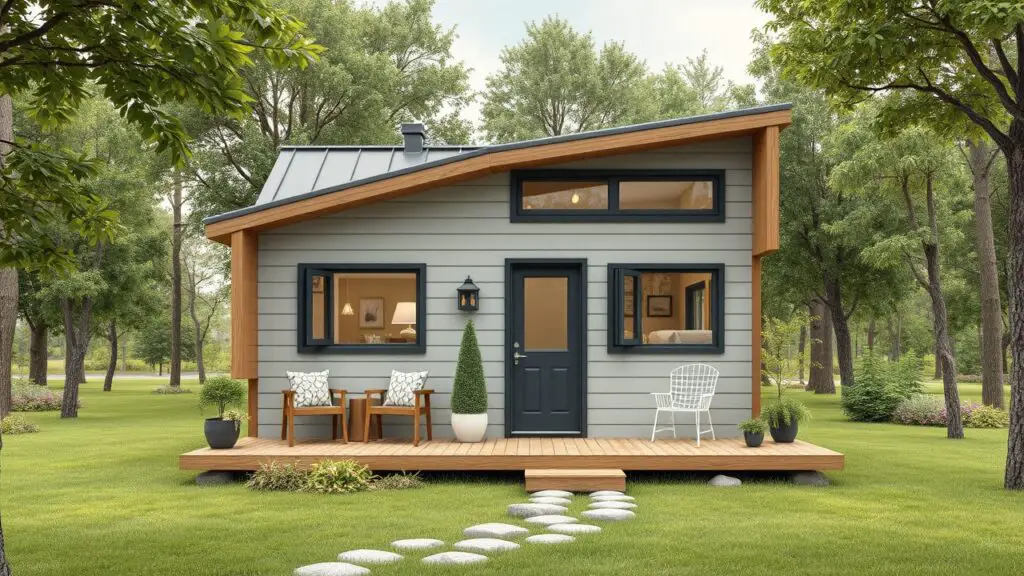
Innovative Design Features
The innovative design features of tiny houses are nothing short of inspiring. One of the most striking aspects is how architects and builders have reimagined traditional concepts of space and functionality. For instance, I was amazed to see how some tiny homes utilize lofted sleeping areas, freeing up valuable floor space for living and dining.
This vertical approach not only maximizes the use of space but also adds an element of coziness that I find incredibly appealing.
The clever integration of stairs that double as storage units or seating areas is another brilliant design choice that showcases the creativity inherent in tiny house living. Moreover, many tiny houses are equipped with cutting-edge technology that enhances their livability.
Smart home systems allow for efficient control of lighting, heating, and security, all from a smartphone or tablet. I was particularly impressed by the use of energy-efficient appliances that cater to the needs of a smaller household while minimizing environmental impact.
These innovations not only make daily life more convenient but also align perfectly with the ethos of sustainable living that many tiny house enthusiasts embrace.
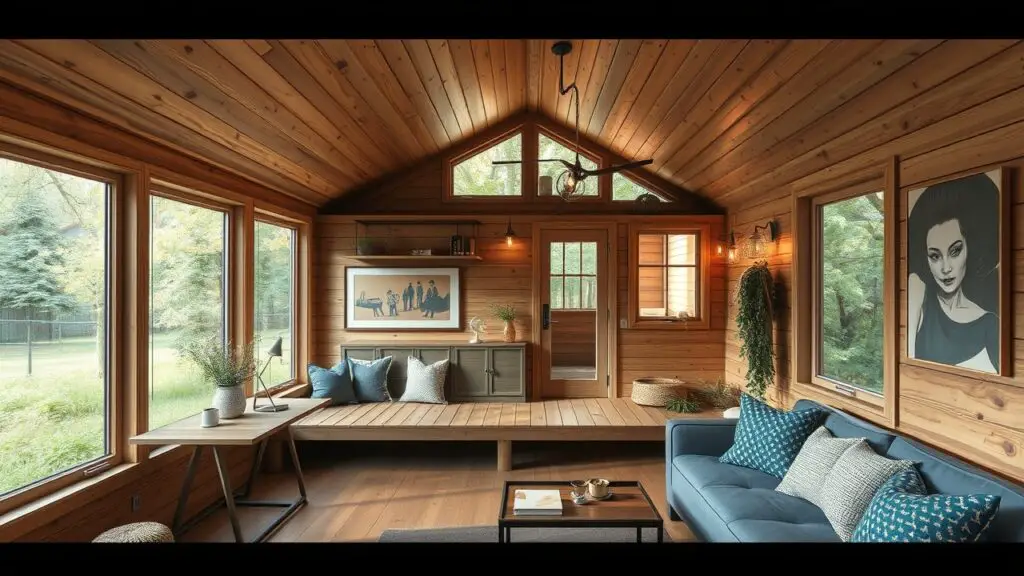
Sustainable Living Solutions
Sustainable living is at the heart of the tiny house movement, and it’s a principle that resonates deeply with me. The smaller footprint of these homes naturally leads to reduced resource consumption, making them an eco-friendly alternative to traditional housing.
I’ve learned that many tiny house owners are committed to minimizing their environmental impact by utilizing renewable energy sources such as solar panels and wind turbines.
This commitment to sustainability not only benefits the planet but also fosters a sense of independence and self-sufficiency that I find incredibly empowering.
In addition to energy efficiency, tiny houses often incorporate sustainable building materials and practices. I was fascinated to discover how reclaimed wood, recycled metal, and other eco-friendly materials are frequently used in construction.
This not only reduces waste but also adds character and history to each home. Furthermore, many tiny house dwellers practice sustainable gardening and composting, creating a closed-loop system that further enhances their commitment to living harmoniously with nature. It’s inspiring to see how these small homes can lead to big changes in lifestyle and environmental stewardship.
For more inspiration, check out these 30 most impressive tiny homes pictures.

Space-Saving Furniture and Storage Ideas
One of the most exciting aspects of tiny house living is the creative use of space-saving furniture and storage solutions. As I explored various tiny homes, I was amazed by the ingenuity displayed in every corner.
Multi-functional furniture pieces, such as foldable tables and convertible sofas, allow for flexibility in how space is utilized throughout the day.
I found it fascinating how a simple piece of furniture could transform from a dining area into a workspace or even a guest bed with just a few adjustments.
Storage is another critical consideration in tiny houses, and I was impressed by the clever ways homeowners have tackled this challenge. Built-in shelves, under-bed storage compartments, and hidden cabinets maximize every inch of available space while keeping clutter at bay.
I particularly loved seeing how some tiny homes incorporate vertical storage solutions, utilizing wall space for books, plants, or decorative items. This not only keeps the living area organized but also adds a personal touch that makes each home feel unique and inviting.
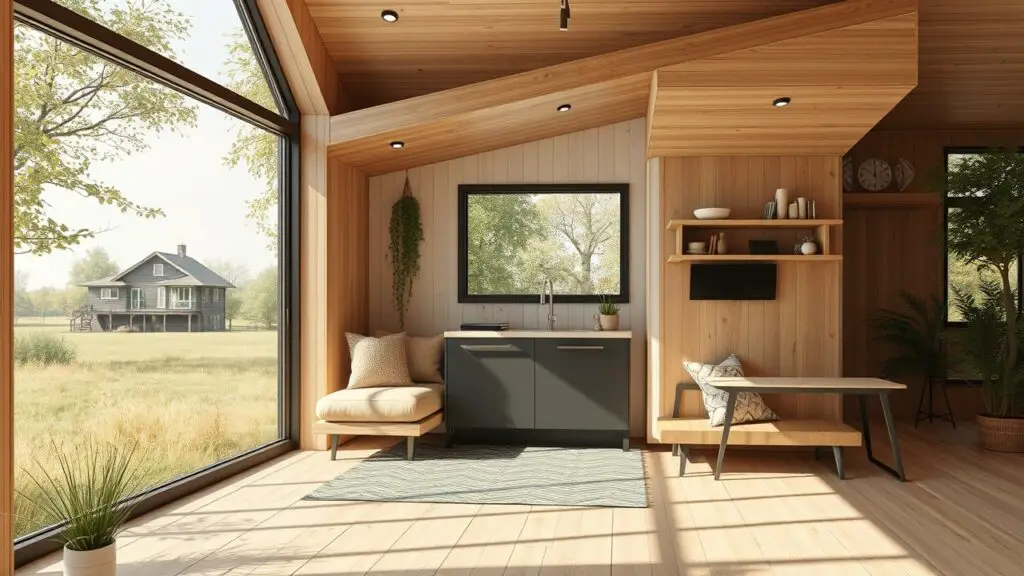
Off-Grid Living Advantages
The allure of off-grid living is one of the most compelling reasons people are drawn to tiny houses. The idea of disconnecting from traditional utilities and embracing a more self-sufficient lifestyle resonates with my desire for freedom and simplicity.
Many tiny house owners have taken this leap by installing solar panels, rainwater collection systems, and composting toilets, allowing them to live independently from municipal services.
This not only reduces monthly expenses but also fosters a deeper connection with nature and a greater appreciation for resources. Living off-grid also encourages a more mindful approach to consumption. I’ve noticed that many tiny house dwellers become more intentional about their energy use and waste production when they rely on their own systems.
This shift in mindset can lead to significant lifestyle changes, promoting sustainability and environmental awareness. The sense of accomplishment that comes from being self-sufficient is something I find incredibly appealing; it’s a reminder that we can live harmoniously with our surroundings while still enjoying modern comforts.
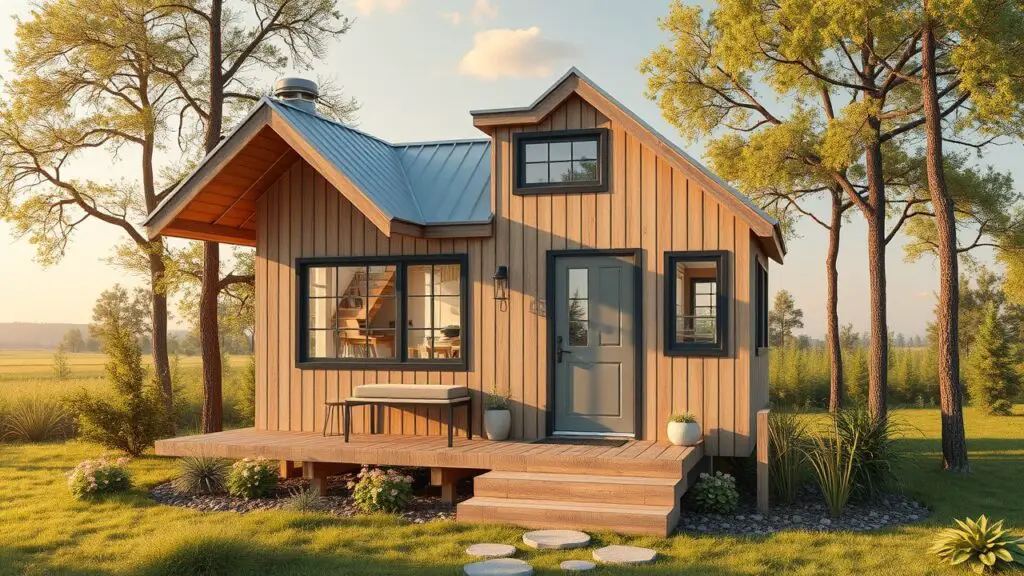
Creative Use of Recycled Materials
The creative use of recycled materials in tiny house construction is a testament to the resourcefulness of this movement. As I explored various designs, I was struck by how homeowners have transformed discarded items into beautiful features within their homes.
From reclaimed wood beams to repurposed windows and doors, these materials not only reduce waste but also add character and history to each dwelling.
It’s inspiring to see how creativity can breathe new life into what would otherwise be considered trash. I’ve also come to appreciate how using recycled materials can significantly lower construction costs while promoting sustainability. Many tiny house builders actively seek out local sources for reclaimed materials, supporting their communities while minimizing their carbon footprint.
This practice not only fosters a sense of connection to the environment but also encourages others to think critically about consumption and waste in their own lives. The result is a home that tells a story—one that reflects both personal values and a commitment to preserving our planet.
Customization and Personalization Options
One of the most exciting aspects of tiny house living is the opportunity for customization and personalization. Each tiny home can be tailored to reflect the unique tastes and lifestyles of its owner, making it truly one-of-a-kind.
As I explored various designs, I was amazed by the range of options available—from layout modifications to decorative choices that infuse personality into every corner.
Whether it’s choosing vibrant colors for the walls or selecting specific fixtures that resonate with one’s style, the possibilities are endless. Moreover, many tiny house builders offer customizable features that allow homeowners to create spaces that meet their specific needs.
For instance, some may prioritize a spacious kitchen for cooking enthusiasts, while others might focus on creating an efficient workspace for remote work.
This level of personalization ensures that each tiny house is not just a place to live but a reflection of who we are as individuals. It’s this sense of ownership and creativity that makes tiny house living so appealing; it empowers us to design our own sanctuary in a way that feels authentic.
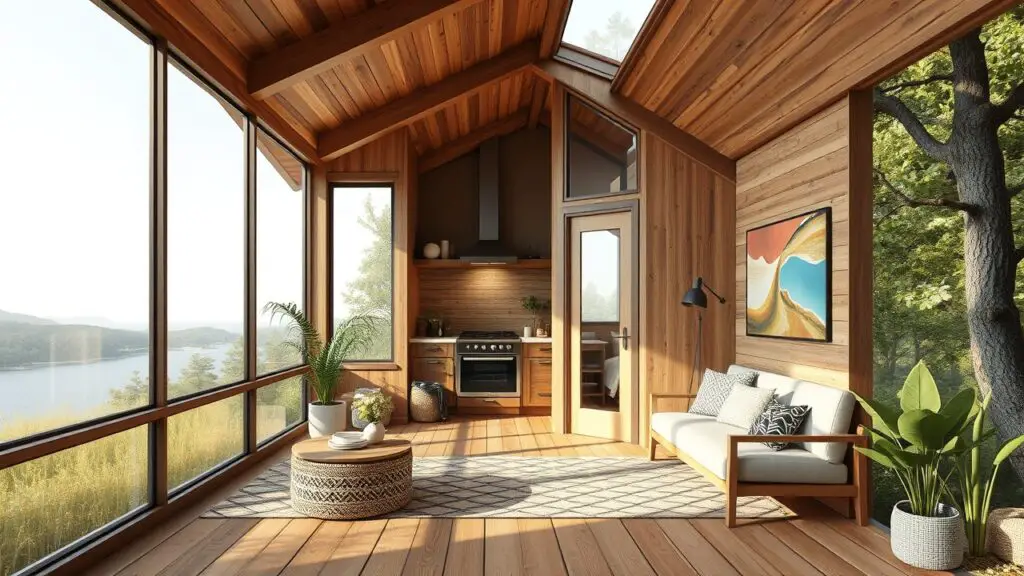
My conclusion
While the allure of tiny house living is undeniable, it’s essential to acknowledge the challenges and considerations that come with it. One significant hurdle is zoning regulations and building codes, which can vary widely depending on location.
As I researched this aspect, I learned that many aspiring tiny homeowners face obstacles when trying to find suitable land or navigate legal requirements for their builds.
It’s crucial for anyone considering this lifestyle to thoroughly investigate local laws and regulations before embarking on their journey. Another challenge lies in adjusting to a smaller living space.
While I admire the minimalist lifestyle that tiny houses promote, it requires a significant shift in mindset regarding possessions and organization.
Downsizing can be an emotional process as we let go of items we’ve accumulated over time. Additionally, living in close quarters can test relationships; effective communication and compromise become essential when sharing such limited space with others.
Despite these challenges, I believe that with careful planning and an open mind, many can find joy in embracing the simplicity and freedom that tiny house living offers.

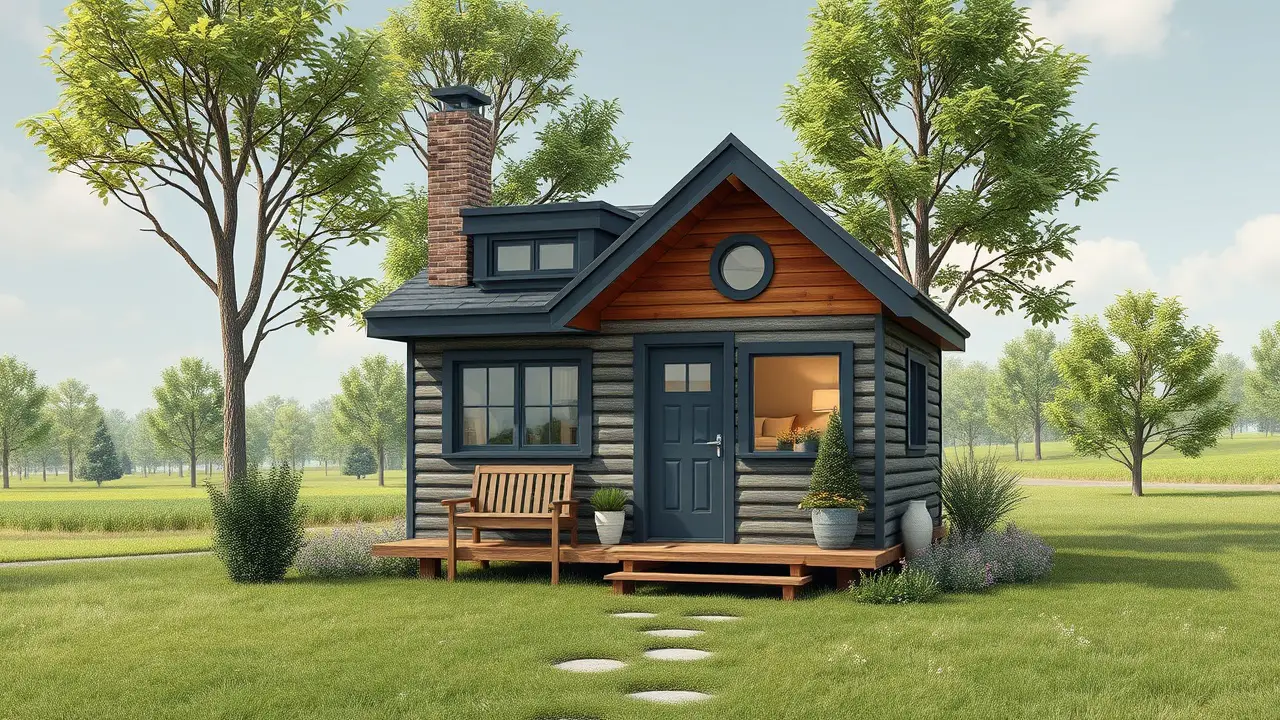












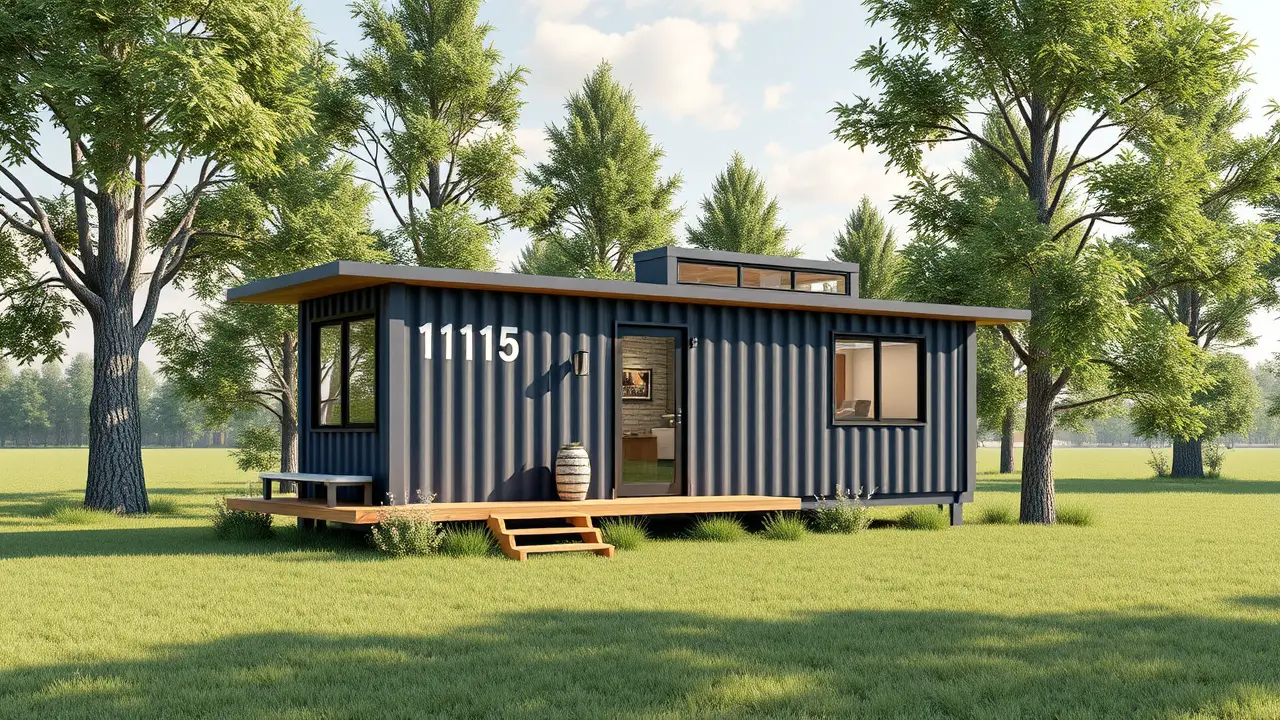
Leave a Reply